33 Best Foods for Old Age People
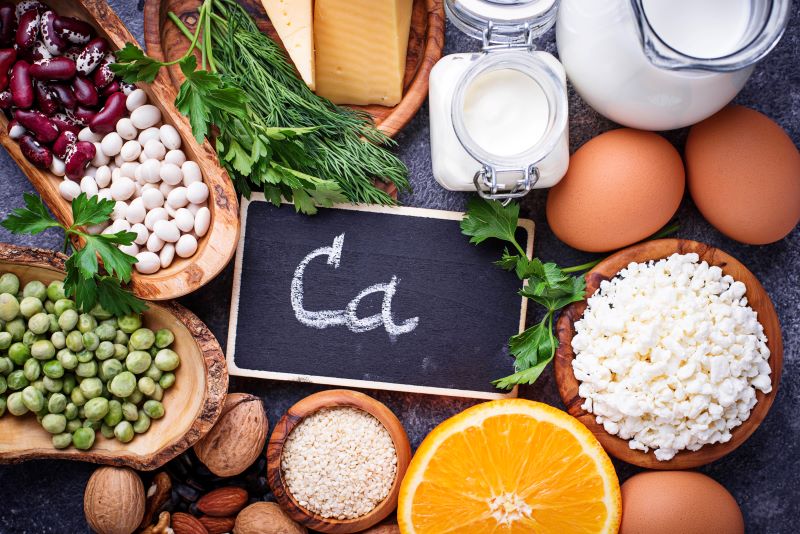
We change our needs for food as we grow older. Thus, modifying our food choices to maintain good health and wellness in old age is essential. This means one must be careful what one feeds on to attain physical and mental fitness.
Consuming a well-balanced diet, which includes nutrient-dense fruits and vegetables, lean proteins, and healthy fats, can assist in fighting off chronic illnesses and thus prolong lifespan. Knowing the best foods for old age people will promote a happier life.

Table of Contents

Importance of Healthy Diet in Old Age
To remain healthy throughout their lives, elderly people must eat proper diets. It helps maintain essential bodily functions of seniors and increases their immunity by making it strong enough to fight against diseases commonly associated with ageing.
Furthermore, eating foods rich in vitamins, minerals, and antioxidants improves brain function and increases energy levels, thereby ensuring that elderly people enjoy their lives until they die and participate in various activities.
33 Best Food for Old Age People
As people age, focusing on nutrient-rich diets becomes increasingly important in maintaining good health and well-being.
The inclusion of calcium-rich foods like dairy products, leafy greens, fortified cereals, and protein like meat and eggs in seniors' meals can greatly help reduce their chances of getting osteoporosis or fractures. As a result, seniors can stay healthy for longer, enhancing their overall quality of life.
List of Protein and Calcium Rich Vegetables for Old Age People
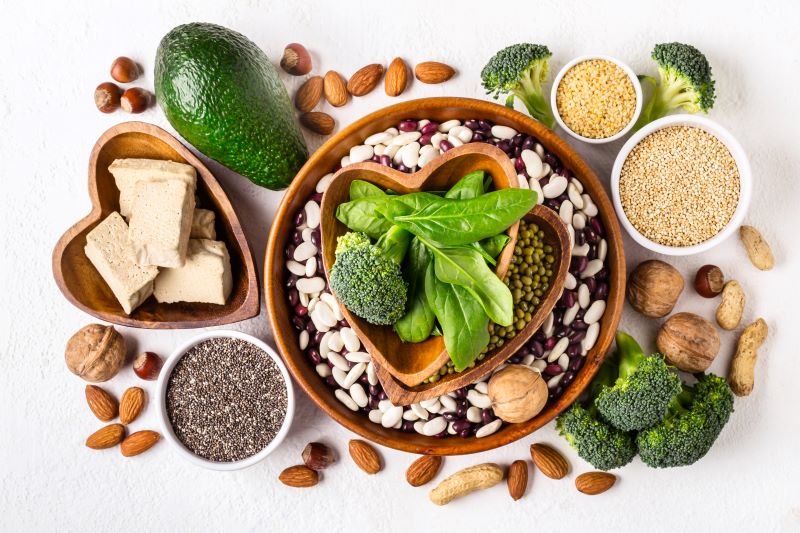
To promote muscle growth and strengthen bones among older individuals, try out different protein-packed vegetables such as spinach or broccoli, which are also high in calcium.
SNo. |
Vegetables | Description | Calcium and Protein Content (Per 100 grams) |
| 1 | Spinach | Great in salads as a side dish and is loaded with iron and antioxidants. | Protein: 2.9 g Calcium: 99 mg |
| 2 | Kale | Versatile leafy green kale, rich in vitamins A, C and K, can be used in salads or soups. | Protein: 4.3 g Calcium: 254 mg |
| 3 | Broccoli | A delicious veggie packed with fibre, vitamins and minerals. | Protein: 2.8 g Calcium: 47 mg |
| 4 | Brussels Sprouts | Roasted in olive oil, it is a good source of fibre and vitamins. | Protein: 3.4 g Calcium: 42 mg |
| 5 | Bok Choy | You can make that stir fry using garlic and ginger for seasoning, and it also comes packed with vitamins A, C as well as K. | Protein: 1.5 g Calcium: 105 mg |
| 6 | Collard Greens | Southern favourites are cooked slowly with ham hocks or smoked turkey necks rich in vitamins and minerals. | Protein: 3.0 g Calcium: 232 mg |
List of Protein Rich Fruits for Old Age People

Discover delicious fruit options such as oranges and kiwis packed with proteins and calcium, as well as reinvigorating juices that seniors can use to boost their nutrient intake.
SNo. |
Fruits | Description | Protein and Calcium Content (Per 100 grams) |
| 7 | Oranges | Eat them fresh as a snack or squeeze them into juice. High levels of vitamin C and antioxidants are found in oranges. | Protein: 1.0 g Calcium: 40 mg |
| 8 | Kiwi | Slice up kiwis to add to fruit salad recipes or blend for smoothies. Kiwi fruits are rich sources of vitamin C as well as fibre. | Protein: 1.1 g Calcium: 34 mg |
| 9 | Figs | Use figs fresh or dried for desserts that taste sweet but are very nutritious. They have high amounts of potassium, plus fibre content is good too. | Protein: 0.8 g Calcium: 35 mg |
| 10 | Apricots | Take raw apricots as snacks or dry ones on the go. Apricots contain two important vitamins, A & C. | Protein: 1.4 g Calcium: 13 mg |
| 11 | Prunes | Cook them slowly before serving desserts as they are high in dietary fibre from natural sugar sources such as dried plums. | Protein: 2.2 g Calcium: 70 mg |
List of Dairy Products and Nuts for Old Age People
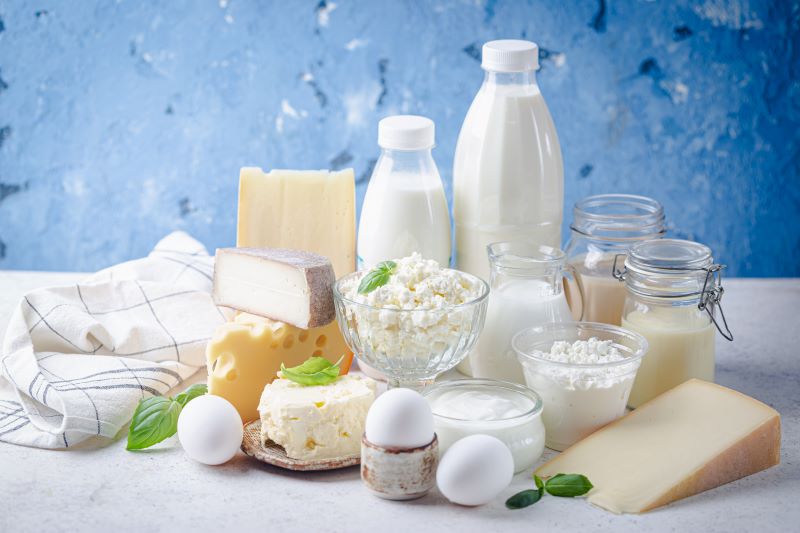
For muscle function or bone strengthening purposes, seniors are advised to take dairy products like milk or yoghurt with almonds or walnuts containing plenty of proteins and calcium.
SNo. |
Dairy Products and Nuts | Description | Protein and Calcium Content (Per 100 grams) |
| 12 | Greek Yoghurt | Have it alone when you want something creamy; add some to your smoothie for extra protein. | Protein: 10 g Calcium: 110 mg |
| 13 | Cottage Cheese | Apply cottage cheese on full-grain bread toastings or garnish these with fruits for a protein snack. | Protein: 11 g Calcium: 83 mg |
| 14 | Almonds | Take raw whole almonds as snacks or include them in salads and oatmeal to have a crunchy source of calcium & protein. | Protein: 21 g Calcium: 264 mg |
| 15 | Walnuts | Spoon them over yoghurt or oatmeal for extra crunch and protein. These are high in omega-3 fatty acids. | Protein: 15 g Calcium: 98 mg |
| 16 | Brazil Nuts | Relish as a snack, or chop and sprinkle as an addition to salads rich in proteins and calcium. | Protein: 14 g Calcium: 160 mg |
| 17 | Fortified Soy Milk | It can be used as a dairy alternative when cooking recipes or taken alone because it is fortified with protein and calcium. | Protein: 3.3 g Calcium: 120 mg |
| 18 | Milk | It can be drunk as a beverage or used in cereals and smoothies rich in proteins and calcium. | Protein: 3.4 g Calcium: 125 mg |
| 19 | Cheddar Cheese | They can be enjoyed thinly sliced on crackers or melted over vegetables for increased calcium and protein levels. | Protein: 25 g Calcium: 721 mg |
| 20 | Pistachios | Whole pistachios can be eaten as snacks, and they can also be added to baked goods and salads that require more proteins with some calcium content. | Protein: 21 g Calcium: 105 mg |
| 21 | Hazelnuts | Incorporate into desserts or enjoy on their own. They are high in proteins and also contain some amount of calcium. | Protein: 15 g Calcium: 114 mg |
| 22 | Cashews | Add them to stir-fries or make creamy sauces by grinding them. This will add more proteins to your meal and calcium, too. | Protein: 18 g Calcium: 37 mg |
List of Protein and Calcium Rich Vegetarian Foods for Old Age People
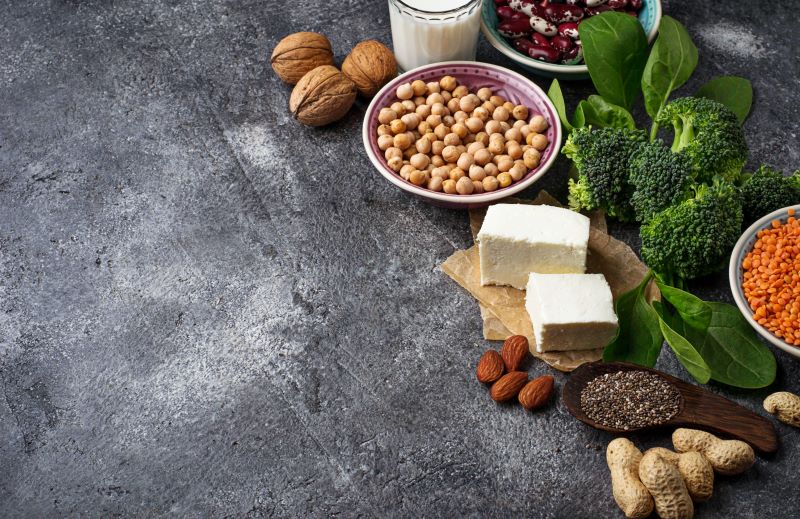
An assortment of vegetarian choices loaded with protein and calcium to aid bone health in seniors and promote their muscle function for an energetic and happier life.
SNo. |
Food items | Description | Protein and Calcium Content (Per 100 grams) |
| 23 | Tofu | This is a very versatile source of protein because it can be used in stir-fries, salads, or grilled dishes, thus providing us with both protein sources. | Protein: 8 g Calcium: 350 mg |
| 24 | Lentils | These have much fibre plus iron vital for life; hence, one should use them to add flavour to soups, stews, or even salads. | Protein: 9 g Calcium: 38 mg |
| 25 | Chickpeas | Roast and season them until crispy, or put them into curries and salads for calcium and protein. | Protein: 9 g Calcium: 49 mg |
| 26 | Quinoa | Use it as a salad or bowl base, or enjoy it as a side dish. It is also important to note that it is a complete protein source. | Protein: 4 g Calcium: 31 mg |
| 27 | Edamame | Steam the beans and sprinkle with sea salt then you get yourself a high-protein snack or just mix it in salads with stir-fries. | Protein: 11 g Calcium: 63 mg |
List of Non-Vegetarian Foods for Old Age People
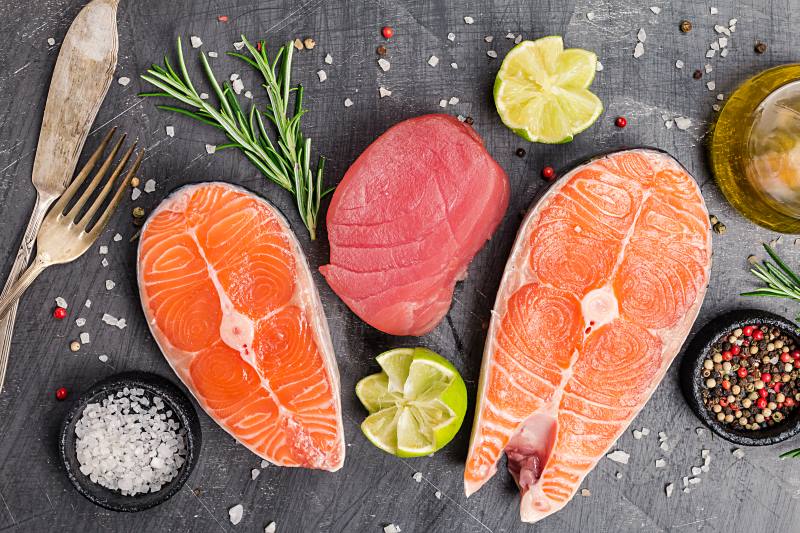
Check out the range of non-veg selections brimming with protein and calcium needed to maintain strong bones and muscles in the elderly, thus promoting good health.
SNo. |
Food Items | Description | Protein and Calcium Content (Per 100 grams) |
| 28 | Salmon | Cook salmon by grilling or baking, which delivers a delicious, nutrition-packed meal containing proteins and Omega-3 fatty acids. | Protein: 20 g Calcium: 12 mg |
| 29 | Sardines | Conveniently, canned sardines, whole wheat crumbs, or salads enriched with calcium and extra protein can be enjoyed. | Protein: 21 g Calcium: 382 mg |
| 30 | Tuna | Protein-rich meals can be obtained by adding canned tuna to pasta dishes, salads or sandwiches. | Protein: 26 g Calcium: 12 mg |
| 31 | Chicken Breast | Grill, bake or roast chicken breasts to become lean sources of protein for the main course and salad items. | Protein: 31 g Calcium: 11 mg |
| 32 | Turkey Breast | It is sliced into portions used in wraps and sandwiches, making it one of the healthiest low-fat lean proteins available for consumption. | Protein: 29 g Calcium: 11 mg |
| 33 | Lean Beef | To have an adequate protein content on your platter, prepare grilled or broiled lean beef together with vegetables. | Protein: 26 g Calcium: 7 mg |
Causes of Nutrient Deficiency in Old Age
As people age, there are several reasons why they may become deficient in certain nutrients. Here are some reasons which can be detrimental to older adults' health and energy levels.
- Restricted Food Possibilities: Older individuals may have more limited dietary habits due to reasons such as their economic status, movement challenges, or problems with meal preparation.
- Digestive Problems: Age-related digestion deficiencies, including low gastric acid production or gastrointestinal disorders, can affect the absorption and utilisation of nutrients.
- Medicine-Induced Malabsorption: Nutrient uptake can be impeded by some drugs typically recommended during old age. It increases nutrient excretion into urine, making the concerned individual more susceptible to malnutrition.
- Chronic Disease Management: Some long-term illnesses, such as diabetes, renal failure, and intestinal conditions, that are common among older people affect nutrient metabolism, increasing nutritional requirements.
- Muscle Wasting: Muscle atrophy during ageing (sarcopenia) results in poor storage and utilisation capacity for essential nutrients, leading to deficiencies of different nutrients.
Symptoms of Nutrient Deficiency in Old Age
Older adults should look for signs such as tiredness, weak bones, mental decline and poor immunity that can indicate deficiencies early enough for intervention, promoting good health throughout their ageing process.
- Fatigue and Weakness: Older adults with malnutrition also feel tired or weak most of the time, even though they can take a good rest, due to decreased energy production.
- Brittle Bones: Deficient calcium and vitamin D can weaken bones, making them more prone to breaks and senile osteoporosis, which often leads to fractures.
- Cognitive Decline: Cognitive impairment, memory loss, and increased risk of dementia might result from a lack of essential nutrients, including B vitamins and omega-3 fatty acids.
- Mood Changes: Nutritional deficiencies may affect the production of neurotransmitters, causing mood swings, irritability, anxiety or depression in elderly persons.
- Muscle Cramps and Spasms: A decreased intake of minerals such as potassium or magnesium could lead to muscle cramps or spasms and restless leg syndrome, for instance.
- Poor Wound Healing: In seniors, inadequate vitamin C and K levels can impair the wound healing process, raising the risk of infections and delayed recovery rates.
- Vision Problems: Retinal diseases like macular degeneration or cataracts associated with old age may result from insufficient vitamin A and lutein or zeaxanthin intake.
- Weakened Immune System: Malnourished individuals exhibit compromised immunity, which makes them highly susceptible to various infections, recurrent illnesses, and longer durations of recovery.
How to Maintain a Healthy Diet in Old Age?
Consuming diverse nutrient-rich foods is important for elderly individuals. Increasing intake of foods rich in calcium and lean proteins is paramount for supporting muscle function and bone health.
- Eat a Wide Range of Nutrient-Dense Foods: To get your necessary vitamins, minerals, and antioxidants, eat different fruits, vegetables, whole grains, lean proteins, and healthy fats.
- Stay Hydrated: Drink water throughout the day to avoid dehydration, which can affect energy levels, cognitive function, and overall well-being.
- Monitor Portion Sizes: To maintain a healthy weight and prevent overeating, one should always be aware of portion sizes. Use smaller plates and bowls to control portion size.
- Prioritise Calcium-Rich Foods: Incorporate calcium-rich foods such as dairy products, leafy greens, fortified cereals, and some fish into your diet to help support bone health and reduce your chances of developing osteoporosis.
- Include Protein Sources: For muscle maintenance and repair, you can include enough protein from lean meats, poultry, fish, eggs, legumes, tofu, and nuts.
- Limit Processed Foods: Processed foods or sugary snacks high in added sugars, including beverages, provide empty calories, leading to weight gain and other health issues.
- Plan Balanced Meals: Plan balanced meals by preparing various food groups to ensure you achieve your nutritional needs. Consider seeking a professional dietician.
Food Items to Avoid When Ageing
In this light, seniors must shun processed meals, trans fat, excess salt, sweetened snacks, and alcoholic beverages that tend to pack on pounds or cause some chronic diseases, thus making their bodies prone to infections.
Food Items |
Reason to Avoid |
| Processed Foods and Sugary Snacks | These foods are rich in added sugars, sodium and bad fats that lead to obesity and make the body prone to chronic ailments such as diabetes and heart attacks. |
| Trans Fats and Saturated Fats | Fried foods, baked goods, and processed snacks contain these fats, which cause high cholesterol levels associated with an increased risk of arteriosclerosis or stroke. |
| Excessive Salt | Too much salt leads to hypertension due to fluid retention, resulting in higher risks of cardiovascular diseases, especially for older people with hypertensive conditions. |
| Carbonated and Sugary Beverages | They have large amounts of empty calories since they contain sugar, meaning that their consumption contributes to gaining weight, dental decay, and bone loss. |
| Alcohol | Drinking too much alcohol can interfere with mental abilities, heighten chances of falling, and even lead to accidents. Seniors need to moderate their drinking habits. |
| High-Processed and High-Sodium Foods | Such products usually contain harmful preservatives, unhealthy additives, or even too much salt, which can cause dehydration. |
| Raw or Undercooked Meats and Seafood | Food poisoning is more common among older adults. Avoiding raw or undercooked meats plus seafood reduces the possibility of being infected by bacteria that cause diarrhoea. |
| Foods High in Refined Carbohydrates | White bread, pasta and pastries are examples of simple carbohydrates. These cause blood sugar levels to rise rapidly, leading to diabetes worsening and weight problems. |
| Excessively Spicy Foods | Spicy food can worsen acid reflux or gastritis, which is more common in the elderly. If you want some relief, it’s recommended that you either take it in moderation or avoid it. |
Side Effects of an Unhealthy Diet in Old Age
Unhealthy nutrition in old age may result in persistent illness conditions, weak immune systems, malnutrition, etc., thus proving the need to consume nutritious food items carefully.













